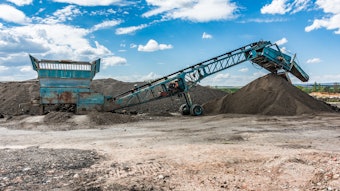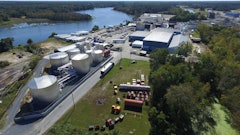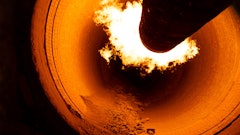![[VIDEO]President Obama on Why We Need America's Clean Power Plan](https://img.forconstructionpros.com/files/base/acbm/fcp/image/2015/08/default.55c398a9137a3.png?auto=format%2Ccompress&fit=crop&h=288&q=70&w=512)
The U.S. Green Building Council (USGBC) released a statement applauding President Obama and EPA Administrator McCarthy for their leadership this week in adopting the Clean Power Plan - a measure critical to the nation’s efforts to address climate change and all the human risks and impacts it entails. Importantly, EPA’s final rule aims to take advantage of market forces to realize significant reductions in greenhouse gas emissions along with co-benefits to public health, such as fewer heart attacks and asthma attacks.
The rule drew the public support of businesses across the country – from small businesses to global brands, many of which are USGBC members and LEED users – because it will provide opportunities for saving money and improving the health of communities where their customers and employees live.
The USGBC went on to say that they appreciate the EPA’s responsiveness to comments from advocates for energy efficiency and renewable energy, and that the final rule makes clear that EPA views energy efficiency as a “major compliance option” for states. Green building is a natural fit to help states leverage private sector investment to optimize end-user efficiency, distributed renewable energy generation and industrial combined heat and power projects.
The EPA’s proposed incentive program is welcomed by the USGBC to spur early investment in renewables and affordable housing efficiency – two areas central to their mission. With this opportunity, the USGBC says they look forward to engaging with EPA and individual states to accelerate and maximize the opportunity for energy efficiency in state actions under this rule as the Federal Implementation Plan and other critical implementation guidance are finalized.
"We now turn to working with the USGBC community, advocates and partners to help states craft plans that reflect the state’s goals and capitalize on this important starting point to further drive market transformation to a clean energy economy," says Marisa Long Public Relations & Communications Director for the USGBC.
However, the new rules could be bad for Americans in the short-term, especially when we're speaking of lowering CO2 emissions in power plants. This is especially concerning for our industry.
Unlike other emissions that have been regulated by EPA up to now, CO2 was not considered an air pollutant by Congress when it passed the Clean Air Act. However, because it has been associated with global warming, means have been sought to control industrial CO2 emissions, and the broad language contained in the Clean Air Act allows EPA to do so.
Industrial processes used to make electricity, cement and other essential materials and commodities, and all forms of combustion, have always produced CO2. Industries have gradually reduced emissions during the past decade, primarily through improvements in energy efficiency and use of alternative fuels. To reduce CO2 emission intensity to the degree sought by the new EPA regulations, however, an industry must either remove CO2 as part of its existing process or shift to a different, less CO2-intensive process.
"Everybody, including EPA, agrees that they will boost the cost of electricity, which in turn will increase the cost of making and using nearly everything," says James Toscas, president and CEO of the Portland Cement Association (PCA). "Higher costs hurt every American's pocketbook, and mean fewer investments, fewer construction projects and fewer jobs. Americans need to understand this."


![Img 1707[56]](https://img.forconstructionpros.com/files/base/acbm/fcp/image/2023/04/IMG_1707_56_.6437076c97961.png?auto=format%2Ccompress&fit=crop&h=191&q=70&rect=0%2C462%2C1920%2C1080&w=340)






















![Glp Porsche 072723 465 64ee42287c29e[1]](https://img.forconstructionpros.com/files/base/acbm/fcp/image/2024/03/GLP_PORSCHE_072723_465.64ee42287c29e_1_.65e88b8589b9c.png?auto=format%2Ccompress&fit=crop&h=135&q=70&rect=0%2C520%2C2250%2C1266&w=240)

